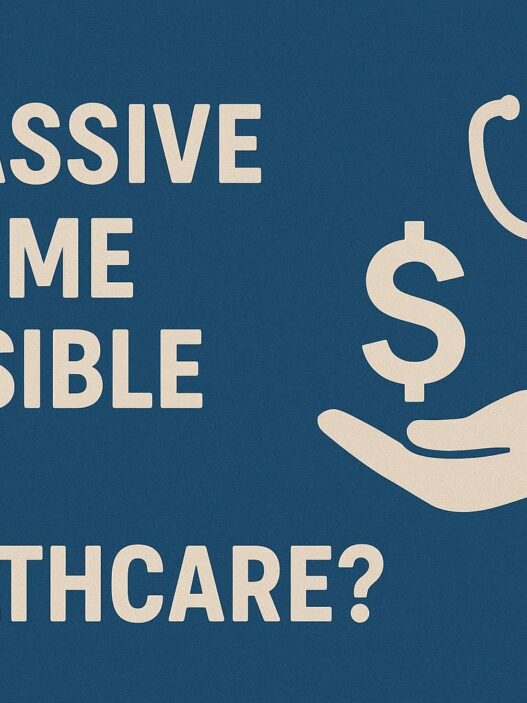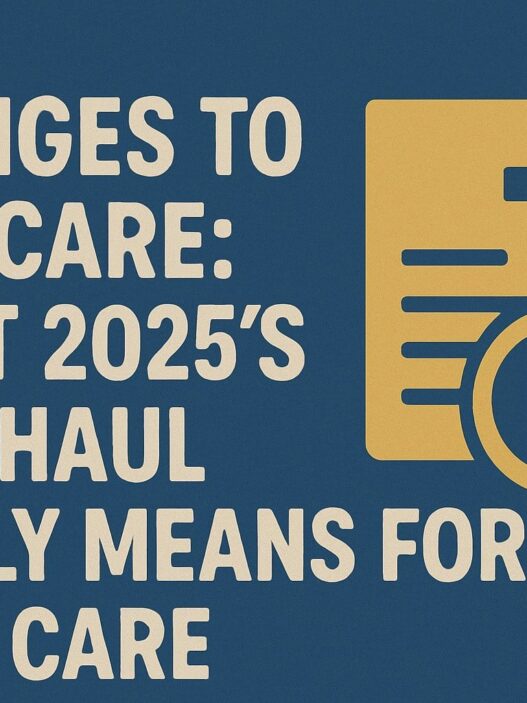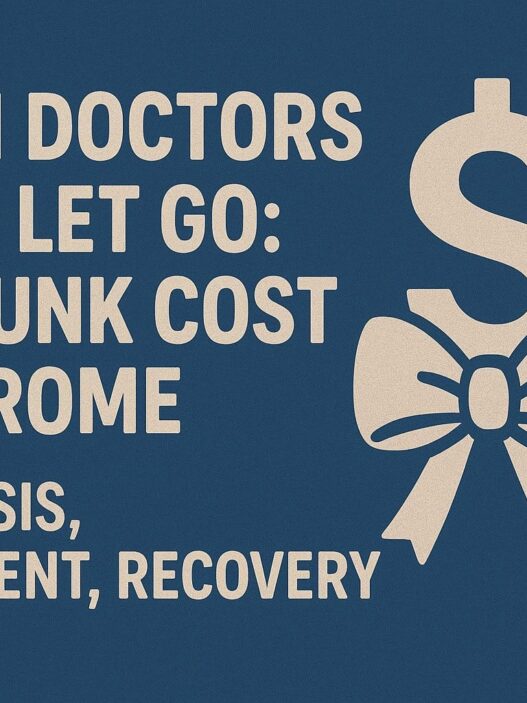“I'm sick of the scaring, the terror, the fright.
I'm tired of being something that goes bump in the night.
I'm bored with leering my horrible glances,
And my feet hurt from dancing those skeleton dances.
I don't like graveyards, and I need something new.
There must be more to life than just yelling, ‘Boo!'”—Tim Burton, The Nightmare Before Christmas
Tired and Bored in the Land of High Income
Dr. Wednesday Addams sat alone in her office at 11 PM, staring at her retirement calculator like it was a biopsy result she didn't want to read. She'd been earning serious money for twenty years—the kind of money that makes people assume you're rich.
Her salary had jumped from resident poverty ($60K and ramen noodles) to attending prosperity ($400K and organic ramen) faster than she could process. But the numbers on her screen looked like a crime scene. Red everywhere. Projected retirement date: age 79. Probability of success: 23%. Her portfolio had less chance of surviving than a Halloween jack-o'-lantern in December.
She was 58. Retirement loomed three years away. Her portfolio? A mess of whole life insurance policies her cousin sold her, a 401(k) she'd ignored for a decade, and a lifestyle that ate $35,000 monthly.
Her story isn't unique. It's not even interesting. Physicians make the same predictable mistakes that torpedo their golden years with the reliability of a zombie horde shuffling toward fresh brains. Let me walk you through the graveyard of retirement dreams where high-earning doctors go to die (financially speaking). Some of these graves are fresh.
He Was Sick of the Scaring, the Terror, the Fright
Burnout affects roughly 48% of physicians, and it doesn't just steal your joy—it murders your retirement. You think you'll work until 68, then burnout hits at 61. Suddenly, you're cutting hours, switching to part-time, or leaving medicine entirely.
Three Paths to Retirement: Choose Your Own Financial Adventure
| Dr. Smart (The Survivor) | Dr. Addams (The Disaster) | Dr. Lucky (The Unicorn) | |
| Starting Point (Age 35) | $300K salary | $300K salary | $300K salary |
| Savings Rate | 25% ($75K/year) | 10% ($30K/year) | 10% ($30K/year) |
| When Burnout Hits | Age 61 | Age 60 | Never |
| Income After Burnout | $240K/year | $200K/year | $400K/year |
| Final Portfolio (Age 68) | $4.5M | $2.1M | $3.8M |
| Safe Annual Withdrawal | $180K | $84K | $152K |
| Annual Spending Need | $180K ✓ | $420K ✗ | $270K ✓ |
| Retirement Outcome | Comfortable | Bankrupt in 6 years | Tight but works |
Dr. Smart's 25% savings rate vs. Dr. Addams's 10% savings rate = $1.6M portfolio difference by age 60. That extra $1.6M is the difference between retirement and working until you die.
Your retirement plan assumes full income until age 68. Your reality? Three years of reduced earnings, maybe more. That $3 million nest egg you projected? Try $2.1 million.
But you've locked yourself into that $35,000 monthly lifestyle. The house in that swanky neighborhood. Private school tuition. Two luxury cars. You can't scale back now without selling everything and starting over.
Smart physicians save 20-30% of gross income during peak earning years. They prepare for the worst while hoping for the best.
Dr. Addams didn't. She spent every productivity bonus. When burnout forced her to go part-time at 60, she panicked.
I Don't Like Graveyards, and I Need Something New
Lifestyle creep is when your spending quietly increases as your income does. You go from a resident making $60,000 to an attending earning $350,000, and suddenly you “deserve” the rewards.
New house. Tens of thousands sunk into upgrading that new house. New car. An au pair for the children. First-class flights. Five-star hotels. Private schools.
Here's what nobody tells you: people don't often want to hugely downgrade their lifestyle once they've gotten used to it.
You think you'll cut back in retirement. You won't. That first-class seat? Non-negotiable. The fancy resort in Maui? Required. Your brain recalibrates “normal” to match your income, then refuses to downgrade. We are creatures of habit during retirement, and hence we follow the same usual spending habits in retirement. Even when we're supposed to be chilling in retirement, our old spending habits tag along like an uninvited, but very persistent, party guest.
I watched an Arizona cardiologist realize he needed $400,000 annually in retirement to maintain his lifestyle. His portfolio? Enough to generate maybe $180,000. He'd spent 25 years upgrading everything, saving minimally, assuming “it would work out.”
It didn't. He's 71 and still working full-time because he can't afford not to.
The fix? Live like a resident for two to five years after residency. Bank the difference between resident and attending income. Kill your student loans. Build your foundation. Then upgrade slowly and deliberately.
He Took the Present Filled Stockings That Hung by the Fire
Whole life insurance. The vampire that never dies. Nearly every physician will have whole life insurance pitched to them. Usually, it is by a friend or family member who just got their insurance license. They'll show you projections that look magical. “Build cash value! Invest and insure simultaneously! Tax-free growth!”
It's mostly garbage.
The main disadvantages of whole life insurance are higher premiums than term life insurance, slow cash value growth, limited flexibility, and high costs and fees in the early years.
You pay $3,000 monthly for a policy with $1 million in death benefit and mediocre cash value growth. You could have bought term insurance for $150 monthly and invested the remaining $2,850 in a boring index fund. After 20 years, the difference? About $800,000 to $1.2 million in favor of term plus investing.
Dr. Addams had three whole life policies. Combined premiums: $8,400 monthly. Total cash value after 15 years: $780,000. If she'd bought term and invested the difference: approximately $1.9 million.
She surrendered the policies at 58. Paid surrender charges. Started over with term insurance and aggressive catch-up investing.
Don't be Dr. Addams.
Jack Hardly Noticed, Which Made Zero Sad
Physicians often don't include their spouses enough in financial management. You're the earner. You handle the money. Your spouse stays out of it.
Then you die. Or get divorced. Or become incapacitated.
Your spouse discovers you've been flying blind for decades. They don't know where the accounts are. Don't understand the investments. Can't access the passwords.
I've sat with widows who discovered their physician husband had:
- Failed to update beneficiaries after their first marriage ended (ex-wife gets the $2 million IRA)
- Never bought adequate life insurance (family gets $100,000 when they needed $3 million)
- Made terrible investments in their friend's startup (lost $400,000)
Your spouse needs to be part of financial decisions. Involving a spouse helps to keep things more conservative. Your spouse becomes your financial brake system, stopping you from making the catastrophically stupid decision that seems brilliant at 2 AM.
Not Twenty Feet From the Spot Where He Stood
Business school professors refer to bad investments as “deals that can only be sold to doctors”.
You're smart. You're educated. You make good money. You're also the world's easiest mark for financial predators. The Nightmare King with the Pumpkin Grin—that's the investment advisor who promises 20% guaranteed returns and tax-free passive income. He's smiling because he's about to make a fortune off your naiveté.
Why? Time poverty and overconfidence. You don't have hours to research investments, so you trust people. You assume your intelligence transfers across domains. It doesn't.
I've watched physicians invest in restaurant chains that folded within 18 months, real estate “opportunities” that looked and smelled something close to Ponzi schemes, private equity deals that looked sophisticated but were just expensive ways to lose money, and cryptocurrency projects that their nephew's roommate's brother created.
You know what's boring? Index funds. You know what works? Index funds.
Put $50,000 annually into low-cost index funds for 30 years, assume 5% real returns, and you end up with $3.32 million. Pay 2% extra in fees and advisor costs, and you end up with $2.38 million. That's almost $1 million lost to fees.
Stop trying to beat the market. Stop investing in your buddy's schemes. Buy boring funds, rebalance annually, and ignore the noise.
Jack Didn't Know It, But He'd Fallen Down
Having sufficient funds for retirement is only part of the equation. You also need to know how to extract that money without destroying your portfolio or your tax situation.
Most physicians have everything in pre-tax retirement accounts. Their $4 million portfolio isn't really $4 million—it's $4 million minus whatever the government takes.
If you need $15,000 monthly for expenses in retirement. That's $180,000 annually. But if it's all coming from pre-tax accounts, you need to withdraw maybe $240,000 to net $180,000 after taxes. Suddenly, your safe withdrawal rate isn't 4%—it's 6%. Your portfolio won't last.
Smart physicians build tax diversification:
- Pre-tax retirement accounts (401k, traditional IRA)
- After-tax retirement accounts (Roth 401k, Roth IRA)
- Taxable brokerage accounts
This gives them options. They can pull from different buckets depending on their tax situation each year.
Why Does He Get to Do It Year After Year?
You're a physician. You spent 11+ years in training. You work 60-hour weeks. You make an impact on patient lives. You deserve to retire comfortably.
But “deserving” something doesn't make it happen. Welcome to the afterlife of retirement planning—it's showtime, and the numbers are about to perform a séance on your financial future.
The numbers don't care about your feelings. If you haven't saved enough, you haven't saved enough. You can't retire on wishful thinking.
Those who save 30-35% of their income are financially independent earlier. The ones who constantly save 10% are stuck working into their 70s.
Your anesthesiologist colleague who saved aggressively retired at 58. Your other colleague who spent everything? Still working at 72. The difference wasn't income—they made similar money. The difference was the gap between earning and spending.
Then a Confused Santa Was Shoved Into a Sack
Most of us are willing to lend much more money than we're willing to give. Your brother needs $50,000 to start his business. Your sister needs $30,000 to avoid foreclosure. Your kid needs $80,000 to buy a house.
You're the rich doctor. They come to you. You loan them money.
They don't pay it back.
Now you've lost $160,000 and ruined three relationships. You can't look your brother in the eye at Thanksgiving. Your sister avoids your calls. Your kid resents you for asking about repayment.
Make the money you hand to friends and family a gift, with no strings attached. It will preserve the relationship and preserve your money. It's far better to give away $10K than to lose $100K in loans.
Dr. Addams loaned her brother $120,000 for a restaurant. It failed. He declared bankruptcy. They haven't spoken in six years.
Their Idea of Christmas Was Still Quite Macabre
Physicians love complexity. Your brain is trained to solve difficult problems. You assume your investments should be equally complicated.
They shouldn't. Simple beats complex. You want:
- Low-cost stock index funds (US and international)
- Low-cost bond index funds (if you're close to retirement)
- Emergency fund (6-12 months of expenses): remember that if you get fired (yes that can and does happen to us -the time involved for credentialling can make that transition very painful.
- Adequate term life and disability insurance
- A written financial plan that you review annually
That's it. Boring. Effective. Scalable.
Your investments should be simple enough that your spouse could manage them if you died tomorrow. If your portfolio requires a 40-page manual to explain, you've failed.
But What He Thought Were Fireworks Meant as Goodwill
If your first few years of retirement coincide with a stock market decline, you'll need to sell more assets to meet your income goal—leaving you with fewer shares and limiting your portfolio's ability to recover.
Sequence of returns risk is the monster hiding under your retirement bed. Two physicians with identical portfolios and withdrawal rates can have completely different outcomes based on when market downturns occur.
Retire in March 2020 right as COVID crashed the market? The Dow fell from 29,551 to 19,000 in one month. If you panicked and sold, you missed the recovery that pushed it past 36,000 by January 2022. Retire in early 2022 when the market peaked? You watched 2022 deliver four separate corrections as inflation spiked and interest rates climbed. The S&P 500 dropped nearly 20% that year. Even 2025 saw volatility—AI darlings like Nvidia plummeting 17% in a single day, trade tensions rattling portfolios.
The timing isn't just unlucky—it's financially catastrophic. Research from Morningstar shows that if your portfolio drops 15% in your first year of retirement and you withdraw 3.3% of the balance, you're six times more likely to run out of money within 30 years compared to someone whose first year showed positive returns.
You can't control when crashes happen. You can control your allocation and withdrawal strategy.
Don't retire with 100% stocks at age 65. You need bonds, cash, and a plan for market downturns. Keep at least two years of expenses in stable investments so you're not selling stocks at the worst possible time. Better yet, use the “bucket approach”—park three to five years of living expenses in cash and short-term bonds.
Dr. Addams learned this at 59 when she looked at her portfolio allocation: 95% stocks, 5% cash. One market crash, and she'd be selling at a loss. She rebalanced to 60% stocks, 30% bonds, 10% cash and started building a three-year cash buffer.
Jack Was Confused and Filled With Great Grief
Physicians who retire early are the most likely to be very dissatisfied with retirement. Medicine gives your life structure. Your identity. Your purpose. Your social connections.
Then you retire. Now what?
You've spent 30 years defining yourself by your work. You're Dr. Johnson, the cardiologist. Retirement strips that away. You're just Bob now, and Bob doesn't know what to do with himself.
You need a plan that extends beyond finances. What will you do with 40-60 hours per week? How will you stay intellectually engaged? Where will your social connections come from?
The transition may go more smoothly if physicians ease into retirement by gradually cutting back on work hours over a year or more.
Consider part-time work. Volunteer positions. Consulting. Teaching. Hobbies that challenge you. Travel with purpose. Your retirement will last 20-30 years. That's a long time to be bored.
Santa Brought Christmas to the Land of Halloween
Here's the good news: you can fix this.
Dr. Addams made mistakes, but she caught them at 58 instead of 68. She had time. She hired a fee-only fiduciary financial advisor. She created a written plan. She adjusted her lifestyle. She maxed out her retirement contributions. She surrendered the terrible insurance policies. She sold the vacation home. She drove her car for four more years.
By 62, she was back on track. She retired at 64 with enough money to maintain a modified lifestyle. Not the $35,000 monthly burn rate she'd had—more like $18,000 monthly. But comfortable. Sustainable. Possible.
You have time. Not unlimited time, but enough time if you start now.
What You Actually Need to Do
Immediately:
- Calculate your actual monthly spending
- Check your retirement account balances and beneficiaries
- Review your insurance (dump whole life, buy adequate term and disability)
This Month:
- Max out your 401(k) or 403(b) contributions ($23,500 in 2025, plus $7,500 catch-up if you're 50+)
- If self-employed, open a solo 401(k) or SEP IRA and contribute the maximum
- Set up automatic transfers to a taxable brokerage account
This Quarter:
- Meet with a fee-only fiduciary financial advisor
- Create a written financial plan with specific retirement goals
- Review your investment allocation
- Involve your spouse in financial decisions
This Year:
- Pay off high-interest debt (anything over 6-7%)
- Build a 6-12 month emergency fund
- Stop loaning money to family members
- Review and update your estate plan
Every Year:
- Increase your savings rate by 1-2% annually until you hit 25-30% of gross income
- Review your financial plan and adjust as needed
- Rebalance your portfolio
You're going to make mistakes. Everyone does. The question is whether you'll catch them in time to fix them, or whether you'll discover them at 70 when it's too late.
Retirement planning isn't sexy. It won't make you feel smart at dinner parties.
But it works. And 20 years from now, when you're retired comfortably while your colleagues are still working because they can't afford not to, you'll be glad you did the boring work today.
Your nightmare before retirement doesn't have to become your nightmare during retirement. You just need to wake up and fix it before it's too late.



















